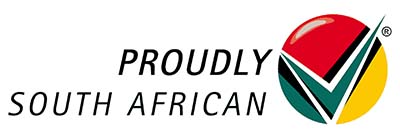Here’s a comprehensive guide to preparation:
- Planning and Scoping (Define audit goals)
- Data Gathering and Organization
- Physical Verification and Documentation
- Reporting and Analysis
A Fixed Asset Audit is a thorough examination of your organization’s fixed assets, like property, equipment, and vehicles.
Preparing well ensures a smooth and efficient audit, saving you time and effort.
Key Facts
- Comprehensive guide to Fixed Asset Audit Preparation in South Africa.
- Define scope, set objectives, schedule audit, assemble a team.
- Review asset register, collect supporting documentation, prepare count sheets, obtain access permissions.
- Develop counting strategy, use tagging systems, perform physical counts, investigate missing assets.
- Fixed asset audit prep is like dressing up for a date—showcase your best self, involve your team, and let the numbers tell your business success story in beautiful South Africa!
Preparation
1. Planning and Scoping:
- Define the scope: Decide which asset classes will be audited (e.g., machinery, vehicles, furniture).
- Set objectives: What do you want to achieve with the audit? (e.g., verify asset existence, assess depreciation accuracy, identify missing or lost assets).
- Schedule the audit: Choose a convenient date and time with minimal disruptions.
- Assemble an audit team: Include internal staff familiar with the assets and, if needed, external audit professionals.
2. Gather Information:
- Review the asset register: Ensure it’s complete and accurate, containing details like asset descriptions, purchase dates, costs, locations, and depreciation schedules.
- Collect supporting documentation: Gather invoices, purchase orders, maintenance records, disposal records, and any other relevant paperwork.
- Prepare count sheets: Create sheets with asset descriptions and identification numbers to facilitate physical verification.
- Obtain access permissions: Arrange access to restricted areas where assets might be located.
3. Physical Verification:
- Develop a counting strategy: Divide assets into manageable groups and assign clear responsibilities.
- Utilize tagging systems: Label assets with barcodes or RFID tags for efficient scanning and tracking.
- Perform physical counts: Double-check each asset against the count sheets and document discrepancies.
- Investigate missing assets: Determine the cause of missing items (e.g., theft, disposal, misplacement).
4. Documentation Review:
- Compare physical counts with asset register: Reconcile discrepancies and update the register as needed.
- Review supporting documentation: Verify the accuracy of asset descriptions, costs, and depreciation calculations.
- Identify and address discrepancies: Investigate and explain any inconsistencies between physical counts and documentation.
5. Reporting and Analysis:
- Prepare an audit report: Summarize the findings, including discrepancies, identified risks, and recommendations for improvement.
- Analyze the results: Identify trends and patterns to improve asset management practices.
- Implement corrective actions: Address any identified issues to prevent future discrepancies and optimize asset utilization.
Compliance With South African Regulations
- GRAP Standards: The Accounting Standards Board (ASB) publishes its Standards in a series of pronouncements called Standards of Generally Recognised Accounting Practice (GRAP). However, entities applying Standards of GRAP need to comply with the wider GRAP reporting framework as set out under Directive 5 as issued by the ASB.
- IFRS Standards: Embrace the global language of financial reporting: IFRS standards are the common ground where businesses meet, and understanding them is like having a universal translator.
- Tax Implications: Don’t get caught off guard: Knowing the tax dance in South Africa can save you from an unexpected financial tango.
- Engaging Stakeholders: Teamwork Makes the Dream Work
Collaboration With Finance And Operations Teams
- Break down the silos: Finance and operations need to be best buddies for a smooth audit ride.
- It’s a people-first approach: Remember, it’s not just about numbers; it’s about the people behind them.
Conclusion
In a nutshell, folks, getting ready for a Fixed Asset Audit is like getting your business dressed up for a date.
It might seem like a hassle, but it’s all about showcasing your best self.
So, embrace the process, involve your team, and let the numbers tell the story of your business success.
Here’s to smooth audits and thriving businesses in beautiful South Africa!








